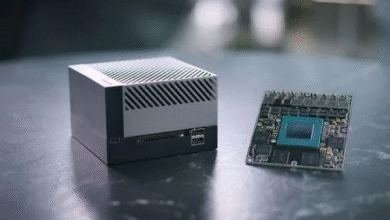EMF-CNF: A New Era in Electromagnetic Field Research and Innovation

In the constantly changing realm of science and technology, few topics garner as much curiosity and debate as electromagnetic fields (EMF). As research continues to expand across disciplines—from physics to biomedical science—a new concept has begun surfacing in academic circles and conferences: EMF-CNF. Whether you’re a seasoned researcher or simply curious about the science behind the buzz, this article explores everything you need to know about EMF-CNF—its meaning, relevance, applications, and future implications.
What Is EMF-CNF?
The term EMF-CNF is emerging as a hybrid concept that links ElectroMagnetic Fields (EMF) with the Conference (CNF) format—often used in scientific and academic contexts. In particular, technical or experimental scenarios may also refer to the integration of EMF applications with Cellulose Nanofiber (CNF) technologies. However, the most widely accepted interpretation today suggests that EMF-CNF is an academic or industry-focused event or platform dedicated to the study and advancement of electromagnetic field technologies.
EMF-CNF serves as a bridge between theory and real-world implementation, drawing experts from multiple fields such as:
- Electrical and electronics engineering
- Biophysics
- Environmental sciences
- Wireless communication
- Medical technology
The Importance of Studying Electromagnetic Fields (EMF)
Before delving deeper into the significance of EMF-CNF, it’s essential to understand the broader landscape of electromagnetic fields and their importance.
Electromagnetic fields, commonly referred to as radiation, are invisible areas of energy and are connected to the utilisation of electrical energy and various forms of natural and artificial lighting. EMF is present in:
- Power lines
- Mobile phones
- Wi-Fi routers
- Medical imaging devices (like MRI machines)
- Natural phenomena like lightning and the Earth’s magnetic field
The ongoing research into EMFs focuses on two primary areas:
- Technological Utilisation – How EMFs can be optimised for safe and efficient power and data transmission.
- Health Impact Studies – Exploring whether prolonged exposure to specific EMF frequencies has adverse biological effects.
This is where EMF-CNF becomes especially significant—as a centralised, collaborative effort to examine both sides of this powerful phenomenon.
EMF-CNF as a Conference: What It Represents
Many researchers and academic institutions have begun referring to EMF-CNF as an abbreviation for “Electromagnetic Field Conference”—an event where cutting-edge research, new technologies, and critical safety studies are discussed.
At such conferences, participants usually include:
- University researchers
- Government policymakers
- Environmental health experts
- Engineers from telecommunications and medical device companies
Key discussion areas typically include:
- EMF shielding innovations
- 5G technology and EMF radiation
- Wireless charging and EMF safety
- EMF exposure standards and global regulation
These conferences provide a platform for publishing white papers, presenting new findings, and networking with professionals working on real-world EMF applications.
EMF-CNF and Cellulose Nanofiber: A Cross-Disciplinary Outlook
In more niche scientific discussions, EMF-CNF may refer to the interaction between electromagnetic fields and cellulose nanofiber (CNF), a sustainable and renewable material made from plant-based sources.
Why would EMF and CNF be studied together?
Cellulose nanofibers are gaining attention for their ability to be used in lightweight electronics, EMF shielding materials, and biomedical sensors. This opens the door for future applications where EMFs are used to:
- Trigger nanofiber-based drug delivery systems
- Improve biosensors for real-time medical diagnostics
- Enable flexible electronics for wearable devices
This intersection is yet another reason the EMF-CNF concept is gaining traction across scientific disciplines.
Applications of EMF-CNF Research
The rise of EMF-CNF as both a term and a collaborative domain of study brings forth numerous real-world applications, including:
Wireless Communication Systems
- Understanding EMFs is crucial for optimising everything from 5G to satellite internet services.
- EMF-CNF events often present new findings on safe bandwidth allocation, data transfer protocols, and techniques to reduce interference.
Medical Imaging & Diagnostics
- Innovations in MRI, CT scans, and EMF-sensitive diagnostic tools are a significant theme at EMF-CNF summits.
- Researchers are exploring ways to reduce patient exposure while increasing accuracy and scan speed.
EMF Shielding Materials
- CNF-based materials show promise as lightweight, biodegradable EMF shielding solutions.
- EMF-CNF studies aim to develop environmentally friendly alternatives to traditional electromagnetic field (EMF) shielding.
Smart Grids and Renewable Energy
- EMF behaviour in smart grids impacts the safety and efficiency of power transmission.
- EMF-CNF gatherings often feature panels on integrating EMF knowledge with green infrastructure.
Global Participation and Recognition
As the importance of electromagnetic fields continues to grow, EMF-CNF events and research publications are gaining international momentum. Countries leading in EMF-CNF activities include:
- Germany – Focused on EMF safety in renewable energy sectors.
- Japan – Investing in CNF tech integrated with EMF studies.
- United States – Leading discussions on EMF policy, 5G safety, and public health.
- India – Actively contributing to low-cost EMF shielding solutions.
Universities, tech companies, and even NGOs are aligning their research agendas with EMF-CNF’s broader objectives.
Future of EMF-CNF: What to Expect Next
Looking ahead, EMF-CNF is poised to become a mainstream label in both academic and industrial innovation. Here’s what we can expect in the next 5–10 years:
- Standardisation of EMF safety protocols under international bodies, such as the WHO or IEEE.
- Cross-sector EMF-CNF collaborations between telecommunications, healthcare, and environmental research.
- Open-source EMF-CNF databases where researchers can access published data, case studies, and experimental results.
- Educational EMF-CNF platforms that offer courses, webinars, and certifications.
Conclusion: Why EMF-CNF Matters Now More Than Ever
The growing relevance of EMF-CNF reflects the increasing need for cross-disciplinary research, safety assurance, and technological advancement in the field of electromagnetic science. Whether viewed as a conference platform, a research initiative, or a tech-material hybrid, EMF-CNF is an emerging keyword that signifies innovation, responsibility, and the future of applied science.
As industries evolve and global connectivity deepens, EMF-CNF will likely play a crucial role in the development of safer, more innovative, and more sustainable solutions. Staying informed about EMF-CNF today means being prepared for the world of tomorrow.
You May Also Read: Whitehack Ghostbox: A Revolutionary Tool for Paranormal Investigations




